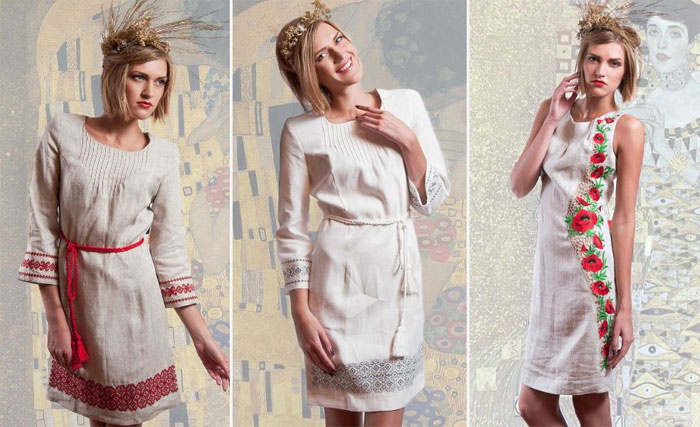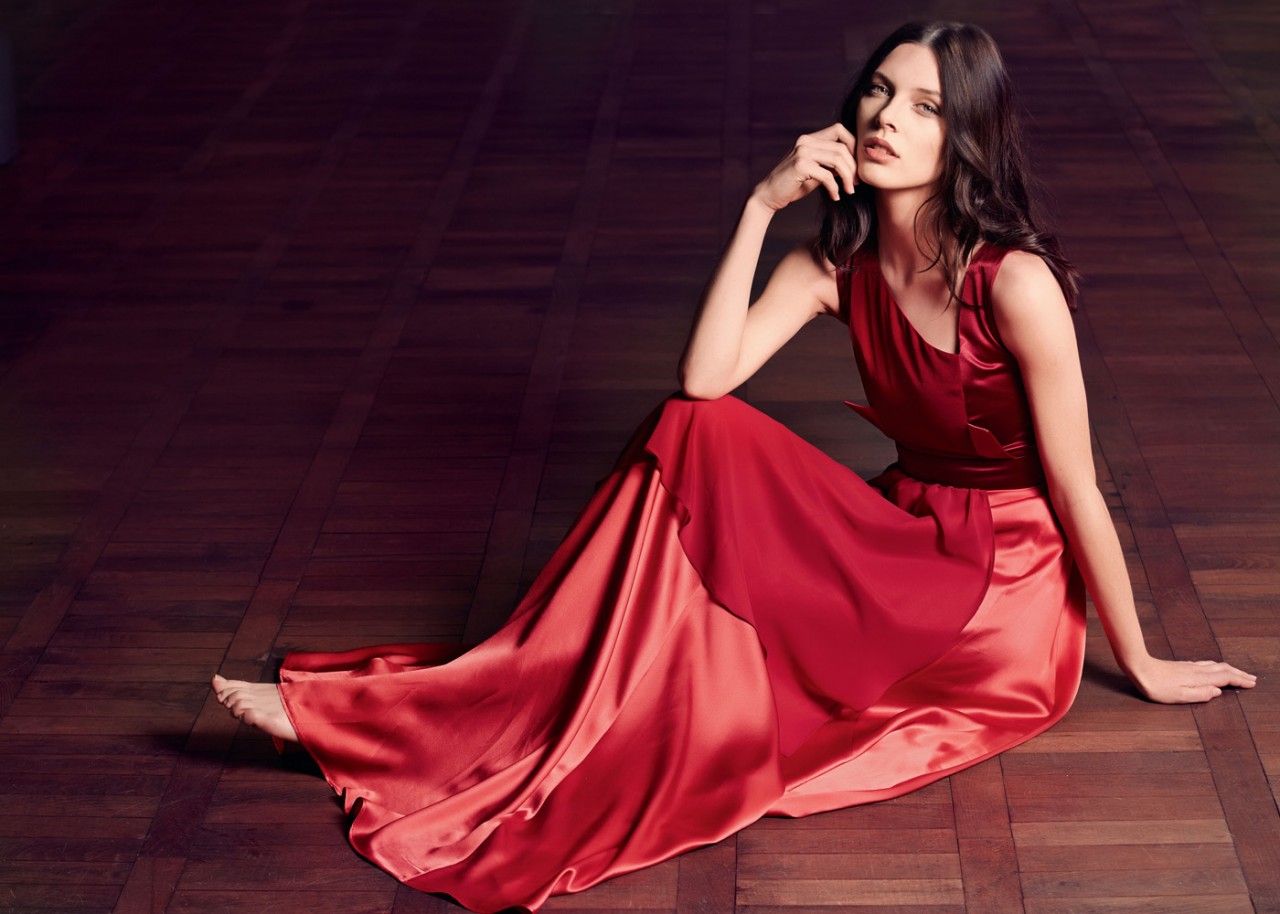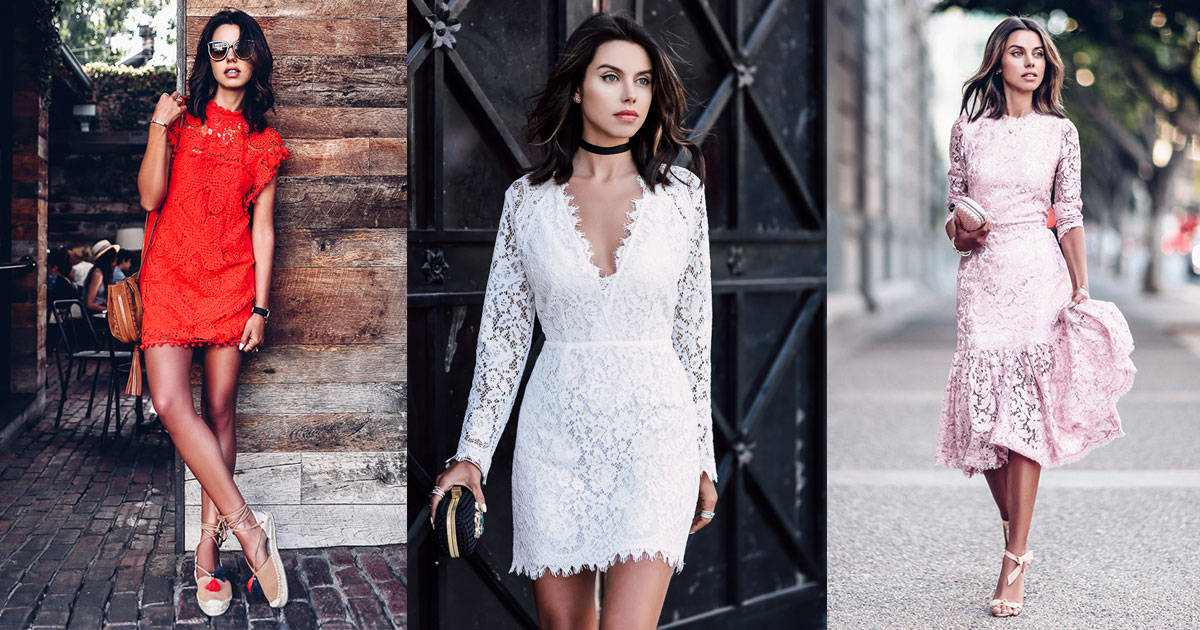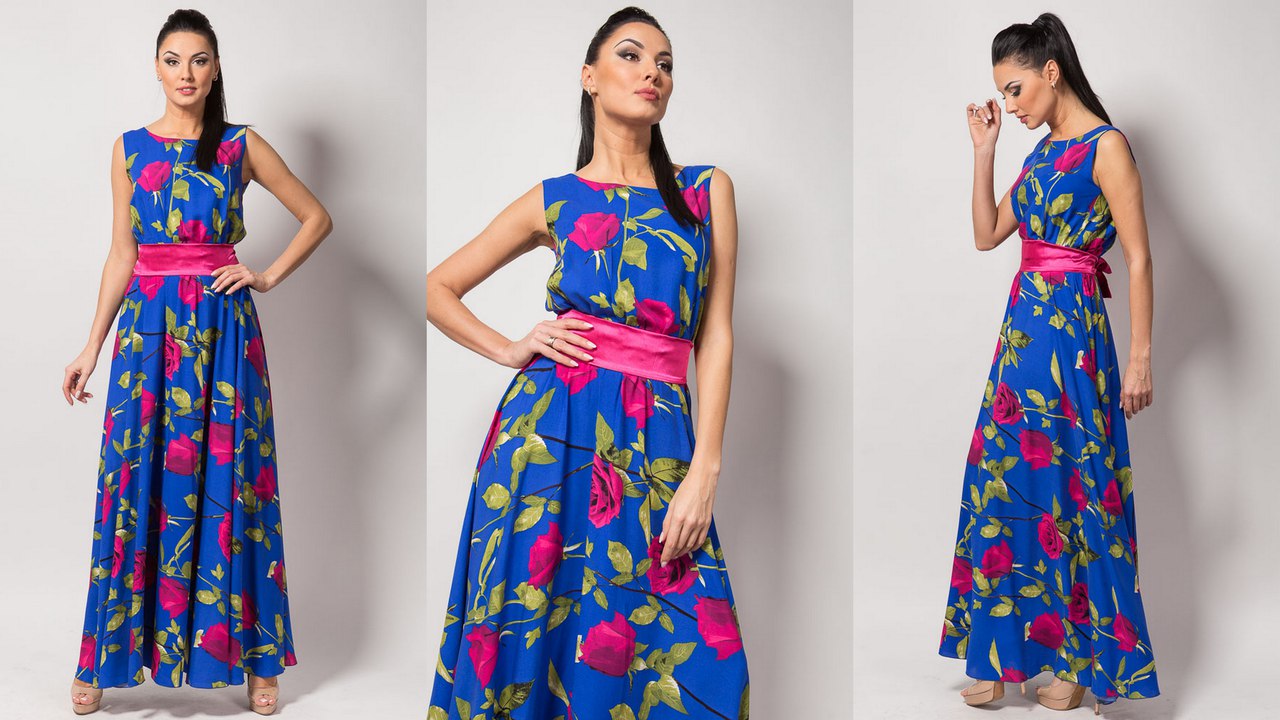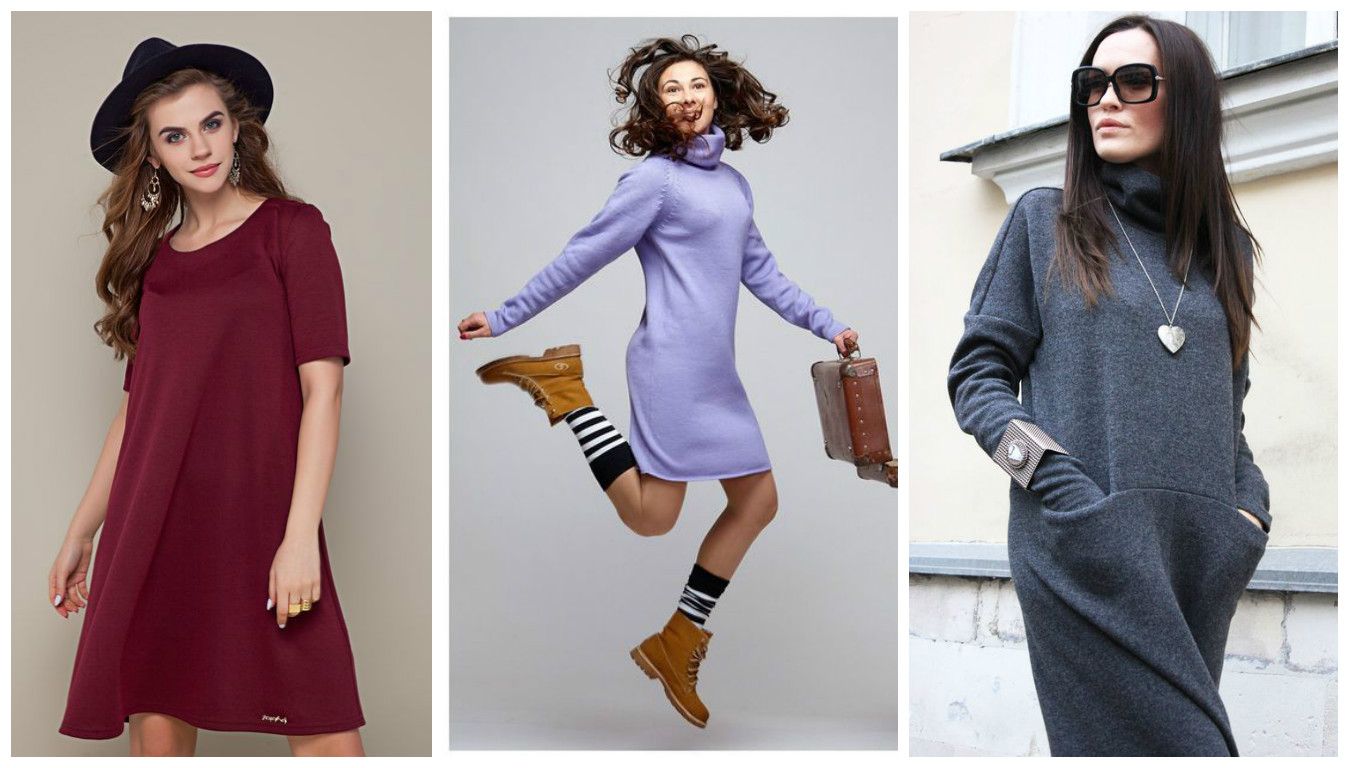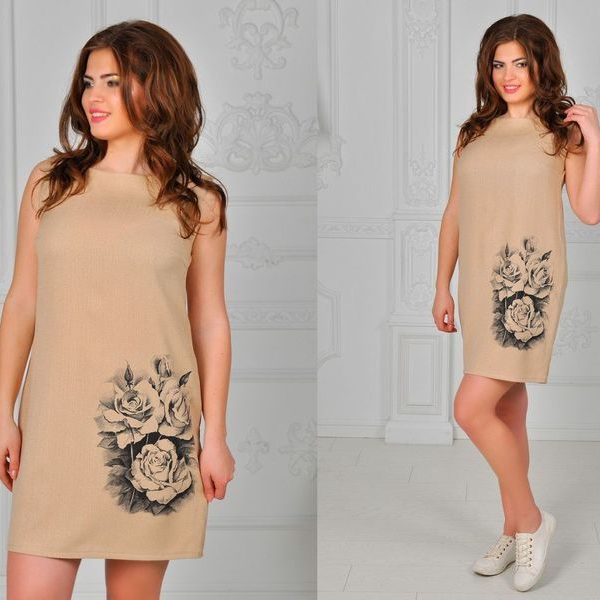Experienced seamstresses, familiar with the types of fabric, easily determine the choice of the necessary material for sewing. But every girl, having decided to make an evening or summer outfit at home, asks herself the question: what fabrics are dresses made of and how not to make a mistake with the choice? This choice depends on many factors. How to choose the right material without consulting specialists? This article will help you get the answer to this question.
Types of fabrics
Designers and seamstresses know what fabrics dresses are made of. If you want to sew an outfit at home, you need to have basic knowledge of sewing skills and choosing a material. It is almost impossible to fix the look of a dress made of an unsuitable material. It is better to choose the right fabric right away. Since there are many types of fabric, you should know their names, material of manufacture and purpose. Not all fabrics with a beautiful pattern or print are suitable for a specific type of dress. You should focus on the name of the material, the feeling when you touch it and the purpose of the finished outfit.
Different types of fabrics are used to make clothes. Most of the varieties of materials are made from mixed threads. However, natural materials are also used to make dresses. Natural materials can be made from flax or cotton fibers. Woolen materials are used to create warm outfits, and silk is used for especially festive or light ones.
Synthetic and artificial materials are rarely used in the creation of clothing. More often they are intended for the production of decorative ornaments (bows, frills, folds). Clothing made from such materials is of low quality.
The characteristics of the recommended (common) fabrics for sewing are given in the table below. These materials are considered the best for sewing dresses. They are used both separately from each other and in all sorts of combinations.
| No. | Name | Characteristics |
| 1 | Guipure | A formal festive fabric. It is made from thin threads with a lace weave. It is especially popular in the manufacture of wedding dresses. It is used to create evening dresses. |
| 2 | Chiffon | It is especially popular when creating dresses and long flowing skirts. The fabric is translucent, thin and light. It can be created from different materials. Made from silk, it is smooth, shiny and has the ability to flow. It is suitable for creating veils, trains, and multi-layered skirts. |
| 3 | Crepe Georgette | Semi-transparent and light fabric. At the same time it has rigidity and elasticity. It is used for decoration of dresses, suitable for decoration of wedding dresses. |
| 4 | Batiste | A soft to the touch material. Both light and dense. Suitable for sewing women's and children's clothing. |
| 5 | Satin | Distinctive feature - shiny surface. Made of silk is popular in the manufacture of wedding dresses. The material is especially festive and light. |
| 6 | Veil | Particularly thin material. Used for sewing trains. The fabric is transparent. |
| 7 | Flax | Allows air to pass through, allowing the body to breathe. Used in the manufacture of home, everyday clothes, less often - office. Suitable for creating summer clothes. |
| 8 | Crepe satin | Double-sided material. One side has a smooth satin finish, and the other is matte. Both can be used as face fabric. Used for sewing multi-layer skirts. Suitable for creating wedding dresses. Can be used as a lining. |
| 9 | Brokat | Silk fabric with lurex. It is a synthetic material. It is used in sewing elegant clothes. |
| 10 | Poplin | A densely woven fabric, poplin is made from silk threads and is used to make elegant dresses. |
| 11 | Taffeta | A dense material made from silk threads. It can have different patterns and textures. It is used in the production of ballroom tutus. |
| 12 | Gabardine | It has high resistance to mechanical damage and wear. Partially waterproof. Suitable for creating casual or office clothes. |
| 13 | Crepe chiffon | Double-sided material. Both sides are the same. It is very light. It is used for sewing evening dresses, when making multi-layered skirts. |
| 14 | Organza | A rigid mesh fabric. It is used to decorate wedding and evening dresses. It is transparent. |
| 15 | Staple | Breathable thin material. Used to create casual summer dresses. Breathable. |
| 16 | Angora | Knitted wool. Made from the wool of rabbits and goats. |
| 17 | Polyester | A material that has appeared on the market relatively recently. It is distinguished by its special softness. Breathable. It is made of synthetic fibers. |
| 18 | Twill | Made from different materials. Made from silk, it is suitable as a lining material. |
| 19 | Pique | Expensive material. It is distinguished by a complex interweaving of fibers. |
| 20 | Openwork | It is made of combined materials. The distinctive feature is the presence of a through ornament. |
| 21 | Silk | This material is made from silkworm cocoons. It is used in the production of evening and wedding dresses. |
| 22 | Polyamide | It has resistance to stretching. It has synthetic fibers. It has good wear resistance. |
| 23 | Velvet | A type of cotton material. Soft, but has small pile. It is created both smooth and with patterns. It is suitable for creating suits, evening dresses for autumn and winter. It has good stretch properties, used for sewing tight-fitting dresses. |
| 24 | Atlas | Smooth material made of silk threads. Has a shiny surface. Is popular in the manufacture of outfits for especially festive occasions. Widely used in sewing evening, graduation and wedding dresses. Used as a lining fabric. |
As the information presented in the table shows, different types of fabrics have different density, internal, external surface, and also the material of manufacture. From the above list, any girl will be able to choose the necessary material for sewing an evening, everyday or walking outfit. Some fabrics are more universal, they can be used in a variety of combinations. Others are suitable only for office wear or as a lining. If you have doubts about the choice of material, it is recommended to study the properties of the selected items in more detail or resort to professional advice.

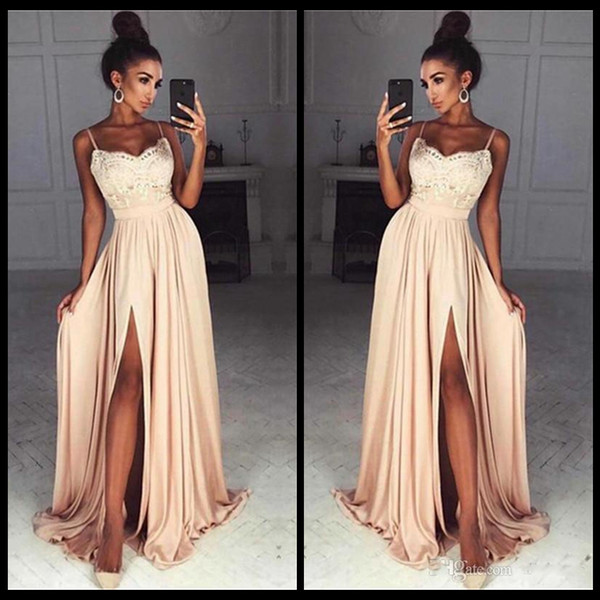

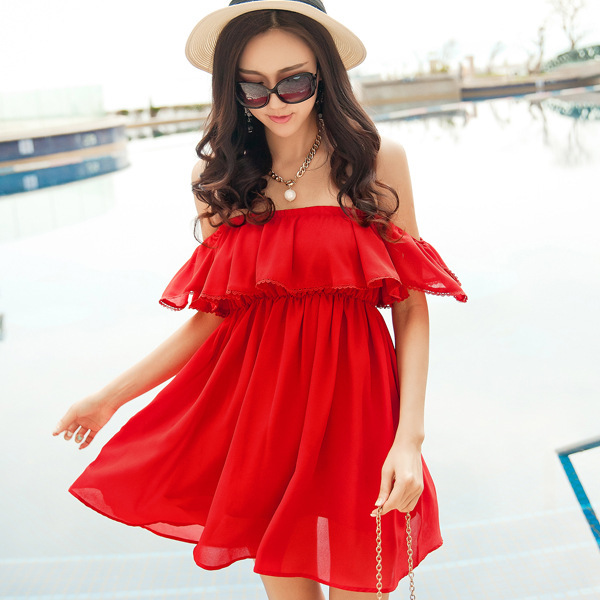
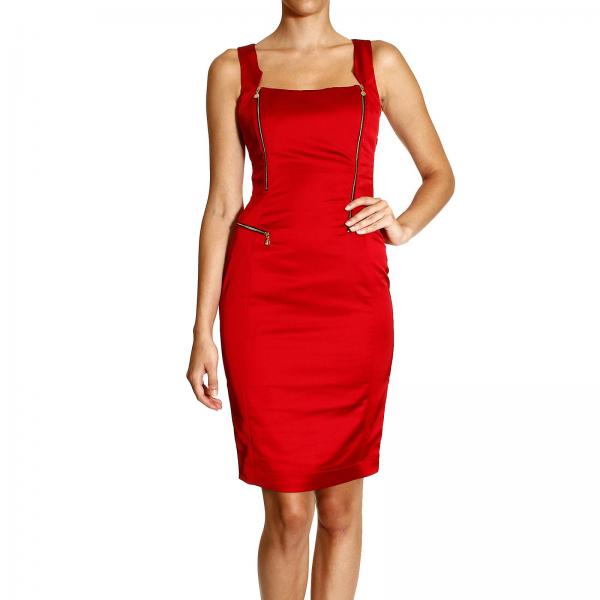

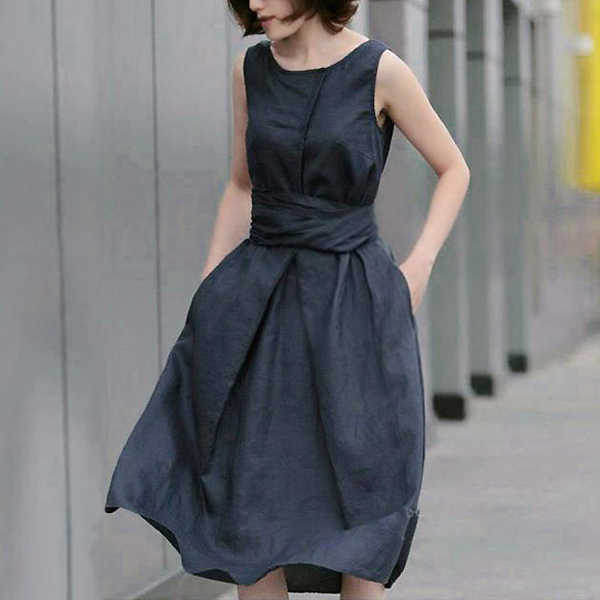
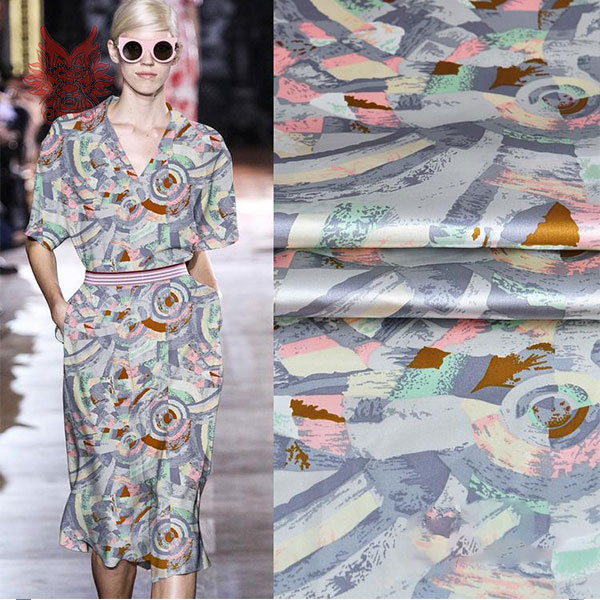
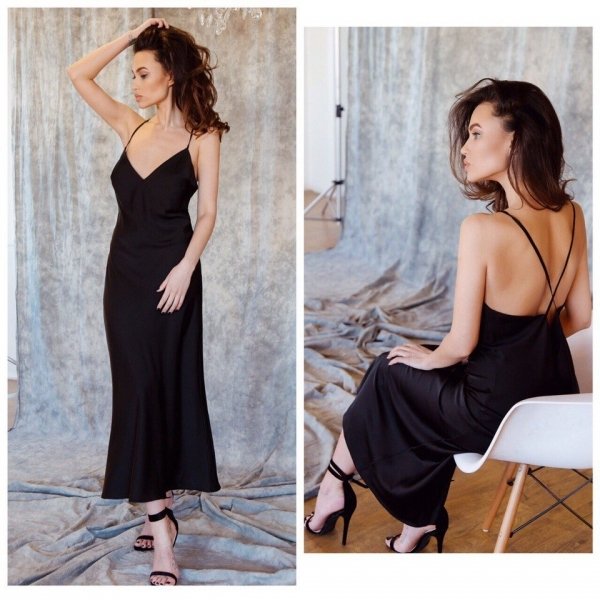
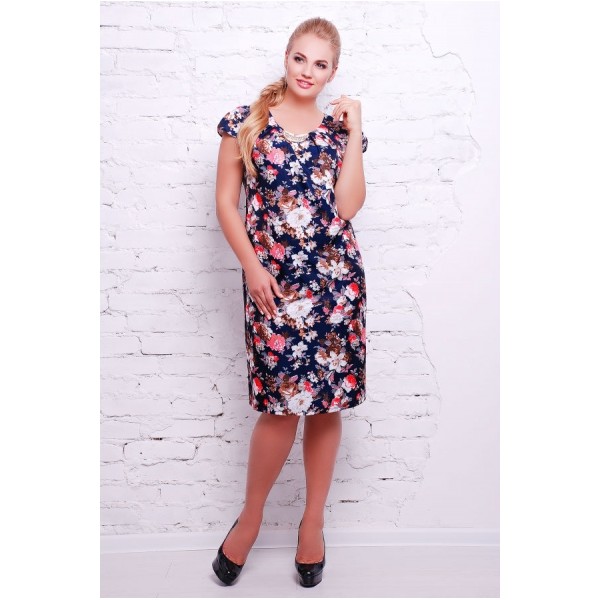
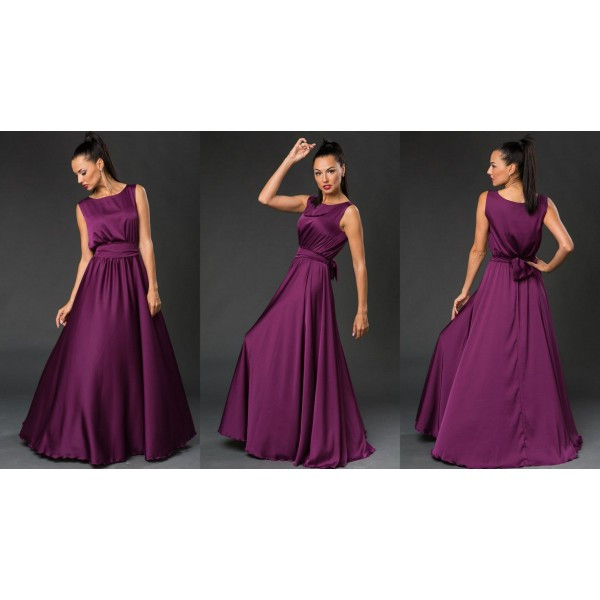
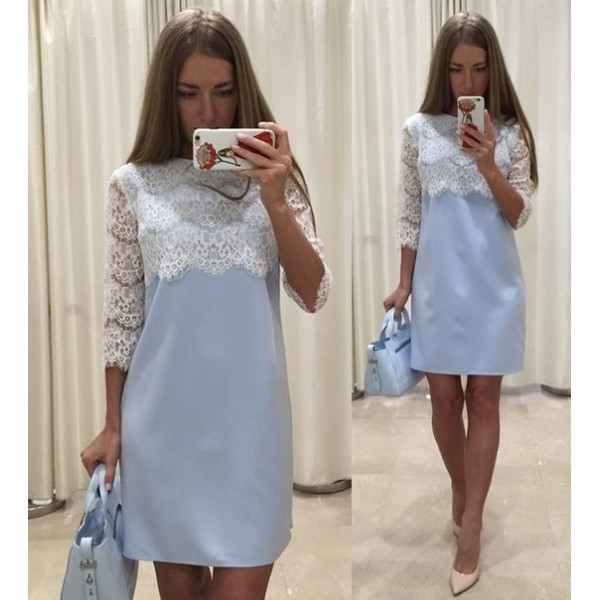

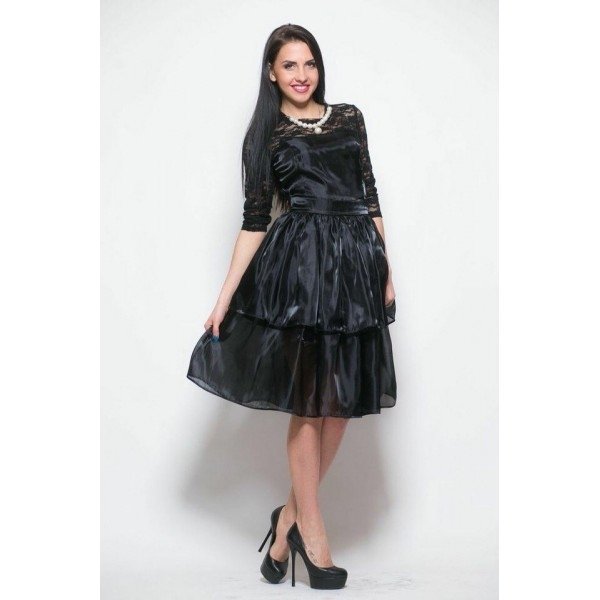

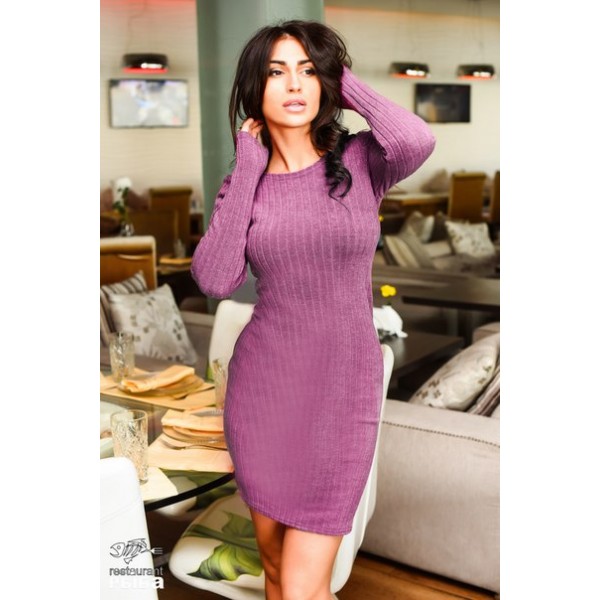


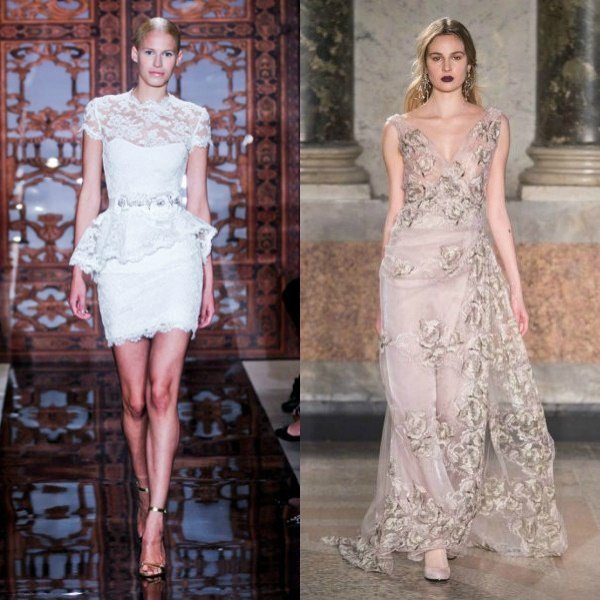

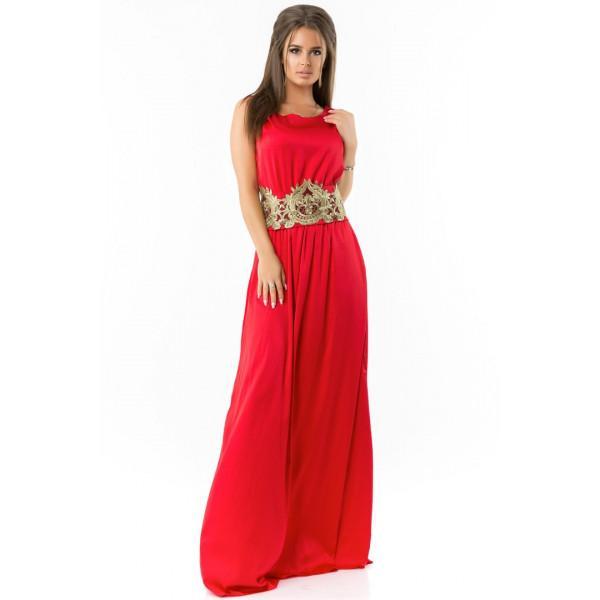

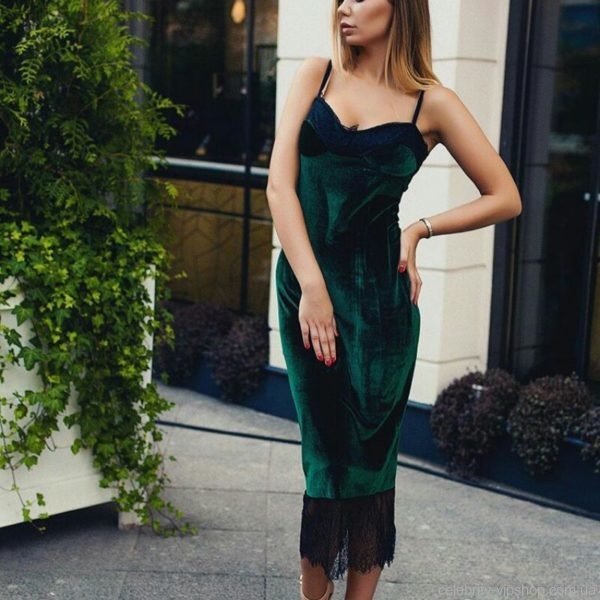
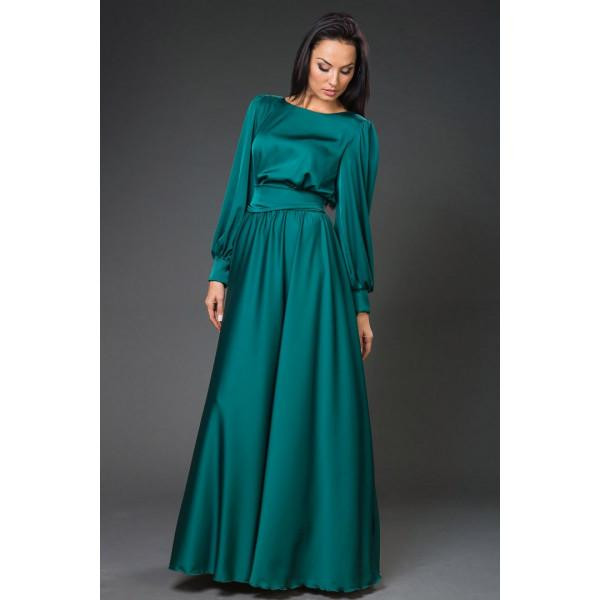
Selection rules
When choosing fabric for a dress, you should consider not only the appearance, color and print of the material, but also its properties and purpose. Experienced designers know the rules for choosing materials that will make the owner of the dress feel comfortable. Materials for summer dresses and for those intended for the winter period differ. The choice of material depends on the structure and print of the material. Materials used to sew dresses for curvy girls may not suit slender girls, while the use of some fabrics is appropriate only for tall and thin girls. The rules below will tell you how to choose fabric for a dress.
Rules to pay attention to when choosing a piece of fabric for a dress:
- The purpose of the finished outfit is determined. Knowing what fabric to choose for sewing home clothes and what for evening wear, it is easier to determine the structure of the material for a specific purpose;
- It is necessary to determine how the material holds its shape. For sewing some outfits, dense materials are needed. Modern types of fabrics provide the opportunity to choose a material with the necessary density. For sewing a summer outfit with a train, it is necessary to take a flowing material, and for strict winter outfits, jacquard fabrics are suitable;
- It is determined what the fabric consumption for the dress will be. Sewing voluminous maxi-length outfits will require many meters of material. Due to this, the price of the finished outfit will increase. Having calculated in advance how much material will be needed, you can choose a material whose price category will fit into the budget;
- The style is determined. For transformer models, a wrinkle-resistant material is needed, for outfits with a knitted collar - a thick one, and for summer dresses - a thin or translucent one.
You should calculate how much fabric you need for a dress before buying a cut in the store. By calculating in advance how much fabric you need, you can avoid problems during sewing, when there is not enough material. The calculation of fabric is made depending on the physical parameters of the body (girth and height) and the style of the finished outfit. The length of the skirt is taken into account. Sewing a knee-length skirt requires significantly less material than sewing a maxi skirt.
When sewing in a studio, they often calculate the amount of material needed and inform the client. Tailors determine the quantity depending on the chest and hip measurements, the presence of sleeves, and the style (cut or one-piece). When providing such services, you should adhere to the quantity of material specified by the seamstresses when purchasing, since experienced specialists know better how to calculate fabric consumption.
What to sew from
The selection criteria described above can help you decide what to sew clothes from. However, the choice of material often depends on its purpose and the time of year. Below are three main groups of outfits and the materials used to sew them.
Summer outfits
Fabrics for summer dresses are chosen in accordance with the needs of the body. They should be light and breathable. Natural materials should be used in their manufacture. Dresses made from natural fabrics bring less inconvenience, you can wear them longer. When choosing what fabric to make a summer dress for everyday wear, you should think about the hygienic properties of the materials.
Recommended summer fabric names:
- lace;
- atlas;
- viscose;
- flax;
- polyester;
- silk;
- chiffon;
- cotton;
- chintz.
It is necessary to choose dresses, both casual and evening, that match the weather, but at the same time look feminine and do not restrict movement. What to pay attention to when choosing fabric for summer clothing:
- hypoallergenic;
- ability to accumulate static electricity;
- time required for drying;
- ability to absorb moisture;
- Does the material wrinkle a lot?
Knowing how to properly cut a transformable dress out of knitted fabric, you can easily make a summer outfit at home in the shortest possible time.

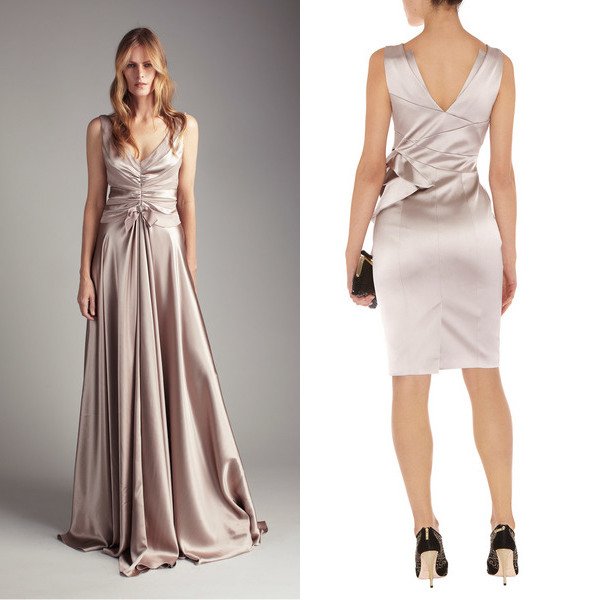

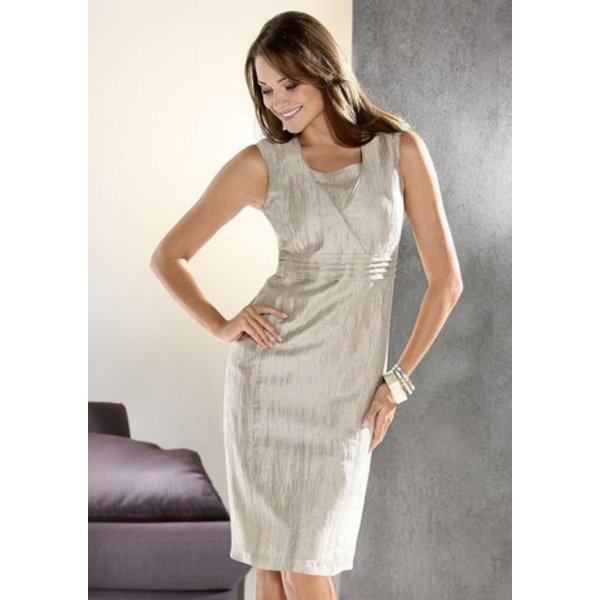
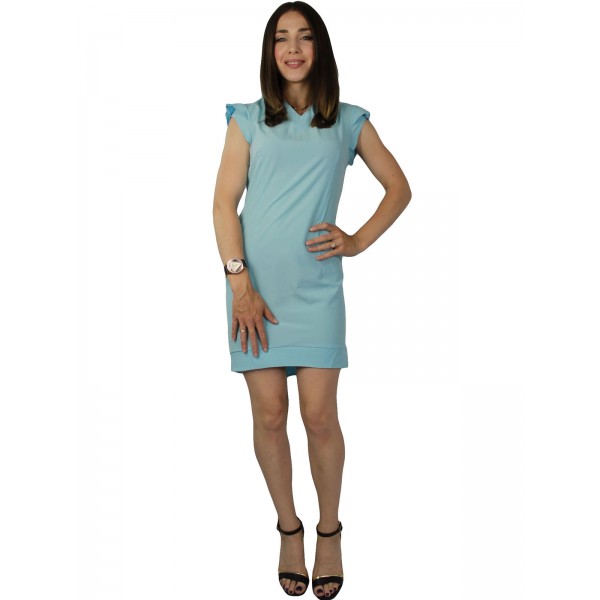
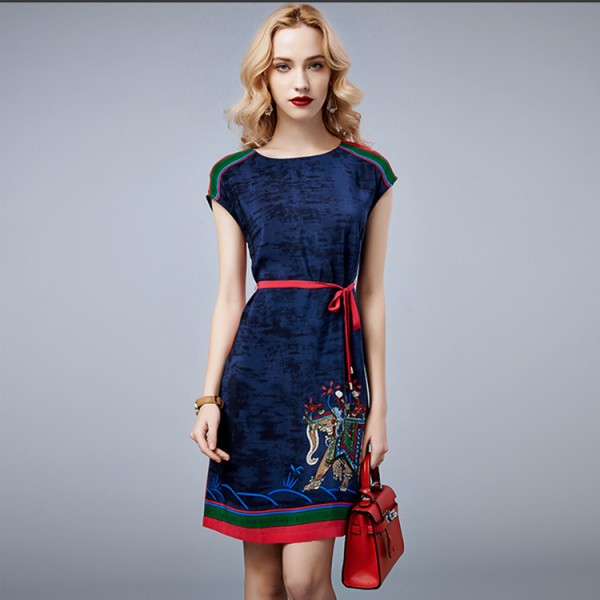
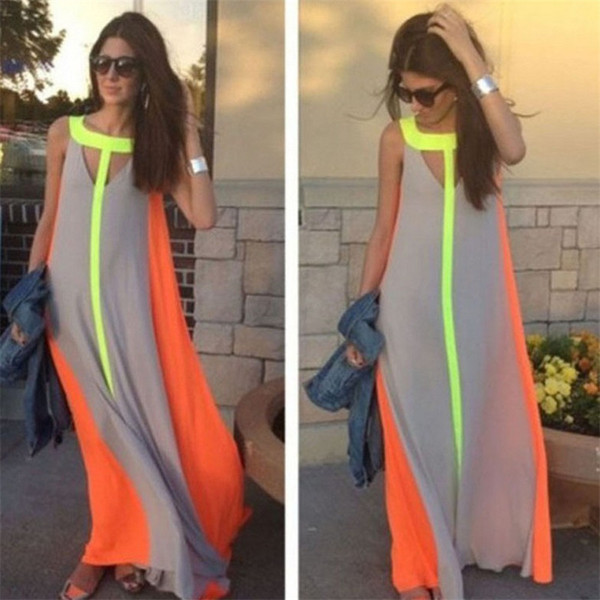

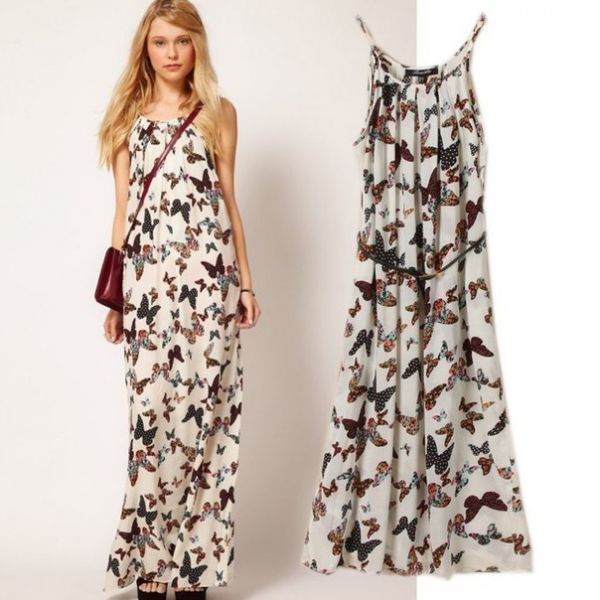
Evening Dresses
There are quite a lot of materials that are called for dresses intended for special occasions. These include:
- chiffon;
- lace;
- brocade;
- atlas;
- taffeta;
- crepe georgette;
- jacquard and others.
The material should be selected based on the following parameters:
- the ability of matter to wrinkle;
- the ability of the material to flow;
- number of layers of the skirt;
- intended decor and decorations;
- purpose of the outfit;
- whether we sew a cover for a dress or not (the fit of the outfits in such cases is different);
- suggested materials for combination with the main one.
Knowing how to calculate the amount of fabric is especially necessary if you need to sew a pleated dress with a multi-layered skirt or an outfit made from different materials. Cutting out an evening dress is quite difficult, especially if you are using 3D printed fabrics. In this case, you should cut out the material according to the large pattern. Calculating how much fabric will be spent on a dress made from fabric with a large pattern is only possible by evaluating the pattern.
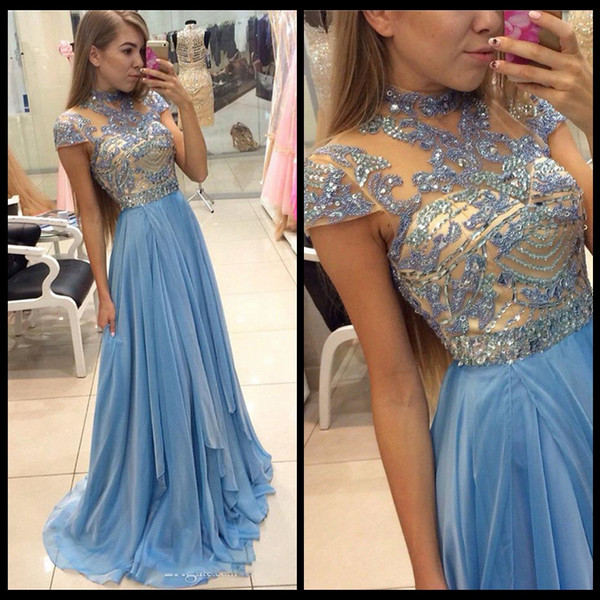
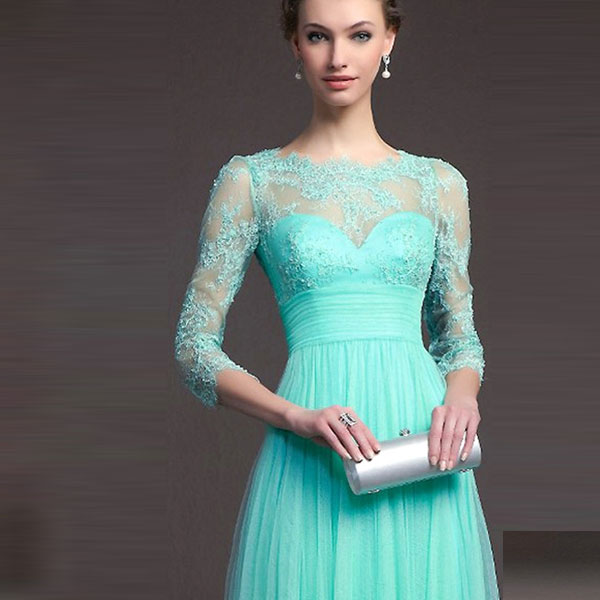
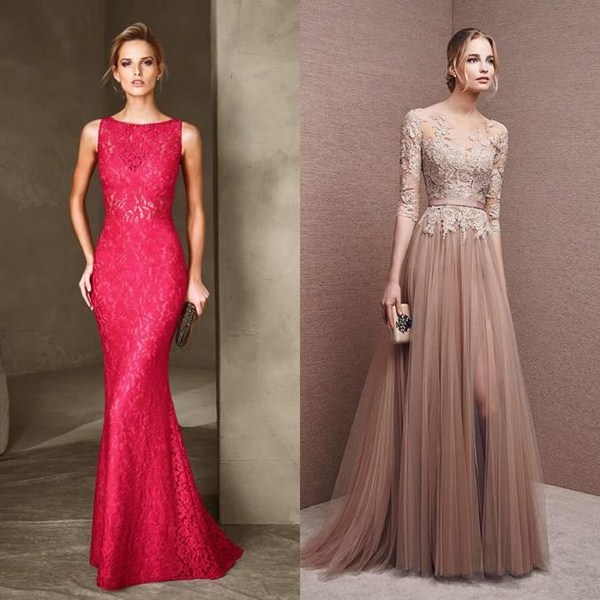
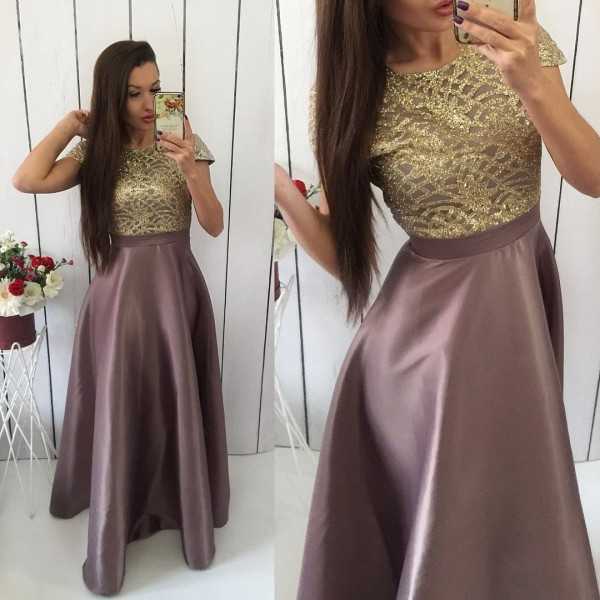



Warm models
The best fabrics for creating warm dresses are the following:
- angora;
- gabardine;
- polyamide;
- tartan and others.
Some dresses use crochet to create decorative details, peplums or frills. The border in warm dresses can be made of distinctive materials that were not used in the manufacture of the main part of the outfit. Combination of materials is most suitable when making the belt, sleeves, neck.
For warm dresses, instead of a zigzag stitch, you can use a crochet hook to decorate the edge. The bound edge will be thicker, the material will not fray. Using warm wool for knitting will make the dress more formal, exclusive and expensive.
When sewing warm models, eco-leather is especially popular. Leather belts, and sometimes entire parts of the dress, for example, sleeves, make the outfit more formal and festive. Such inserts indicate the good taste of the girl who wears this outfit.
As the above material shows, you should approach the choice of models for making clothes responsibly. The success of the finished garment depends largely on the quality of the fabric, print and pattern. You can choose the right material without consulting specialists. However, if the suit is sewn with the participation of professional designers or seamstresses, you should listen to their opinion, since they have extensive experience in making formal and everyday outfits.

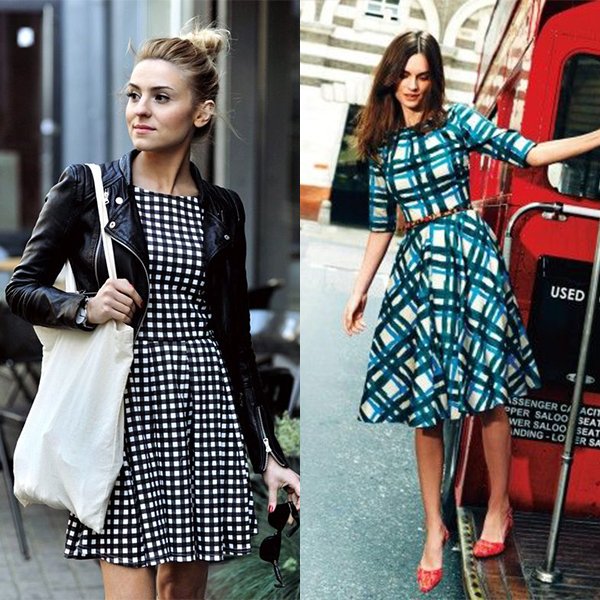

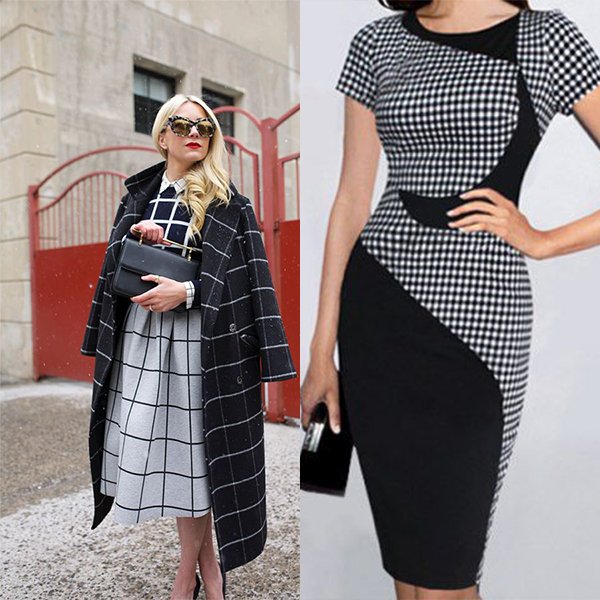
Video


